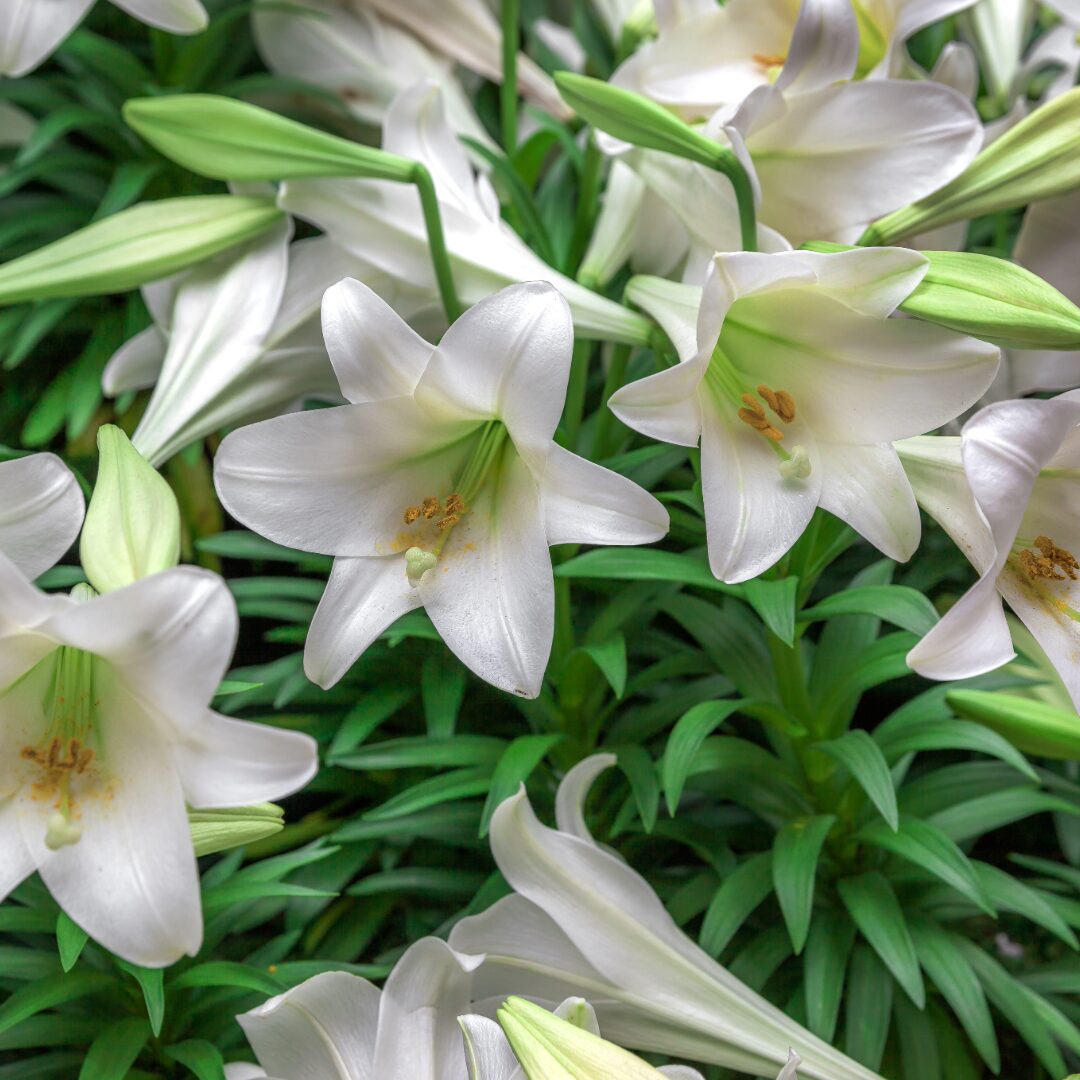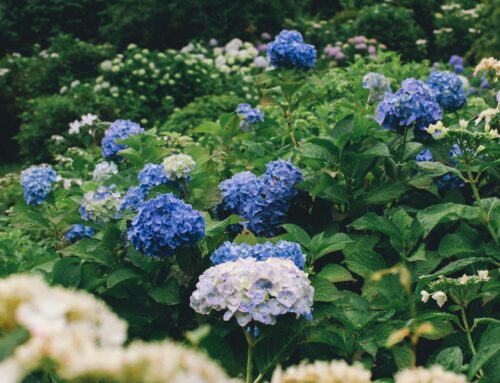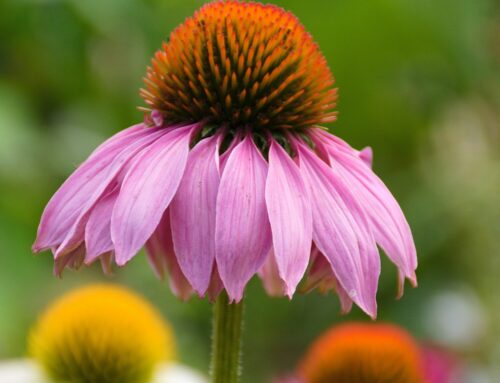Easter is known for fun traditions, family gatherings, and brightly painted eggs. More than that, Easter is associated with spring flowers. Among these are tulips, daisies, and hyacinths. But what flower could be more symbolic of Easter than Lilium longiflorum, the Easter lily itself? Its depiction in religious paintings and association with purity and revival make it a prime choice for this spring holiday. Easter lilies make a fantastic addition to bouquets, floral centerpieces, and your garden at home.
Fun facts about Easter lilies:
- Easter lilies have cultural ties predating Easter traditions. Their significance to Christian symbology as a flower of purity is long-standing. Pure white lilies have been used to symbolize the Virgin Mary. In Greek mythology, the goddess Venus was jealous of the white lily’s beauty. Pagan religions hold deep ties with Easter lilies and motherhood.
- Lilium longiflorum is native to Japan and was an exclusively Japanese import until after World War I, when the bulbs were brought back to the U.S. to grow. Easter Lily production in Japan decreased drastically again after World War II.
- Commercial cultivation of Easter Lilies is prominent in the United States, particularly in the Pacific Northwest region. Oregon, known as the “Easter Lily Capital of the World,” plays a significant role in global production, supplying bulbs and potted plants to markets worldwide.
- Demand for Easter lilies have given them the nickname of ‘white gold’.
- While it’s associated with a spring holiday, its natural bloom time is July through August. It has a short lifespan, but it grows vigorously and returns every year.
The next time you see an adornment of Easter lilies, remember their deep cultural significance and interesting history. Most of all, enjoy the spring flowers and have a happy Easter.





